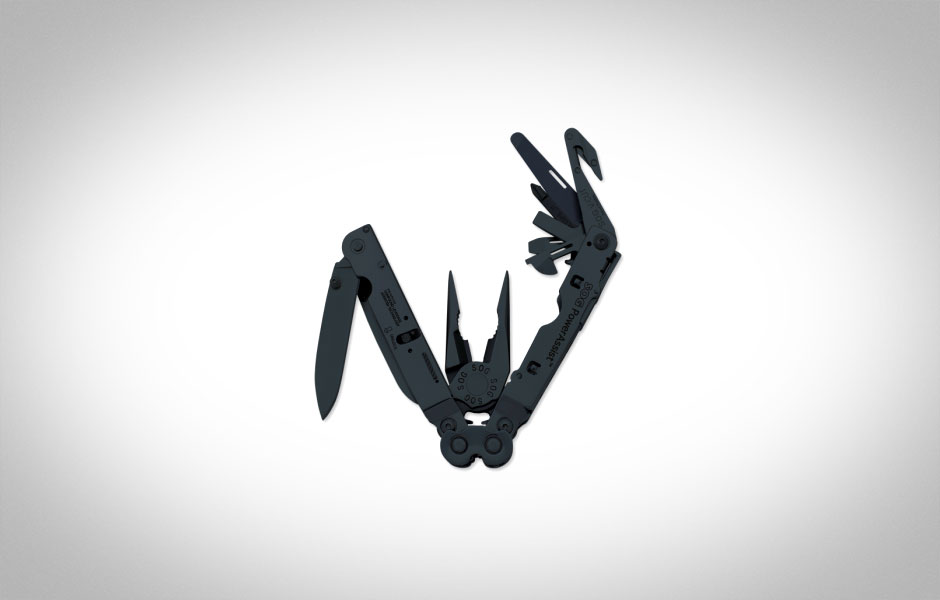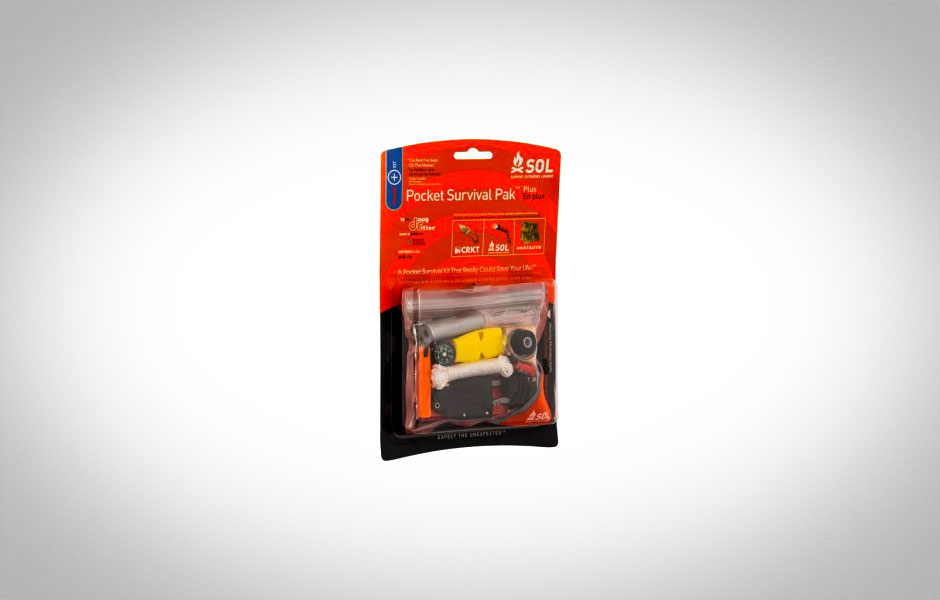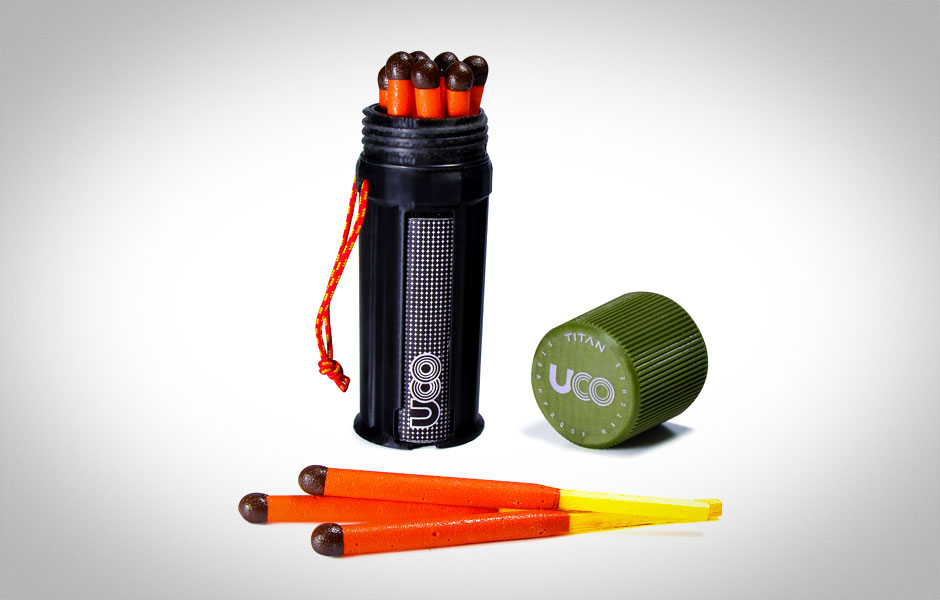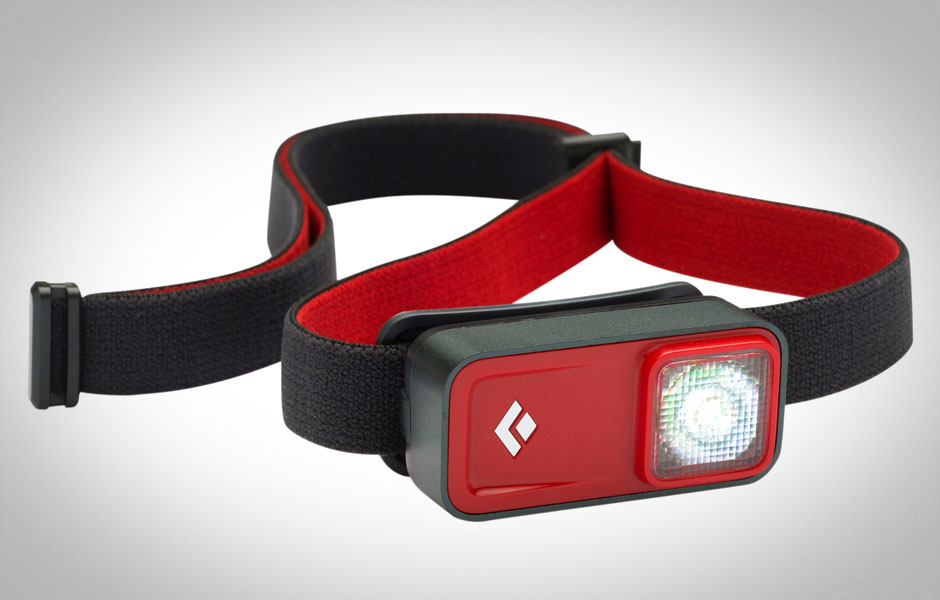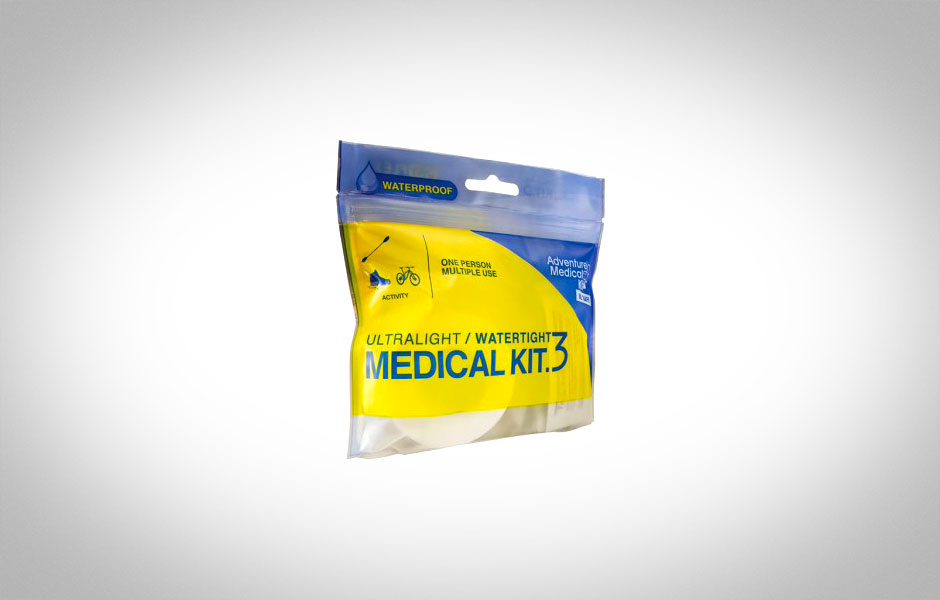- 1. Power assist
- 2. Pocket survival pack
- 3. UCO Titan matches
- 4. Black diamond ion
- 5. AMK ultralight
It seems that about this time of year, folks get a serious hankering for some backcountry adventures. A jaunt through the John Muir Wilderness, a week in Glacier National Park, or even some extended beach camping in Key West all have their ups and downs, but if the worst happens you’ve got to be prepared. No one expects you to MacGuyver your way out of a survival situation, but having a few extra tools beyond safety pins and duct tape will pay dividends next time you and your friends are on the trail without shelter or fire.
We spotted the great kits from Gear Pods early this year, and can honestly say that their hard cases and pre-made kits are some of the best on the market. With the ability to customize the contents for your situation, they’ve got everything from simple cooking packages to bigger, multiple-compartment essentials kits. The tube layout is especially handy, not only for space-saving, but they can be connected to consolidate all your survival essentials in one place. For the more advanced backwoodsman, or simply to build a little extra customization, you can order empty pods. We keep an “XL” sized pod in our work bag with a few extras for those “just in case” moments in life.
SOG PowerAssist
With 16 different tools and a body built from 420 stainless steel, the SOG PowerAssist is our favorite tool to use for everything from cutting fishing line to quick fixes around the office. Ours has been to a couple of continents in the past five years, and still looks brand new.
SOL Survival Pak Plus
This streamlined little survival kit has everything a real survivalist needs for a week in the woods; for most of us, that means we could probably get by for a night lost on the trail. With everything from water purification tabs and fire starters to signalling and shelter materials, this little kit will get you out of a tight spot (or impress your date while trying to start a romantic fire in the forest).
UCO Titan Matches
You’d be surprised how often you’ll turn to good matches while on a backpacking or camping trip this summer. Sure, we all want to strike the perfect spark from a fire knife, but sometimes the convenience of striking up one of these Titans is just what you need. Completely stormproof, they also burn for up to 25 seconds, giving you ample time to get your fire going. Look for them to hit retailers this summer.
Black Diamond Ion
Our Ion Headlamp goes everywhere with us. Running on two AAA-batteries, this little flashlight provides up to 80 lumens of light – perfect for around camp or during a power outage. Its convenient swipe on function is much more convenient than a push button, meaning you won’t accidentally turn it on in your pack and kill your batteries before you need it.
Adventure Medical Kits Ultralight .3
The Ultralight .3 has everything you and friend will need for a day out in the backcountry. Alternately, we keep one in our pods, and it has come in handy everywhere from the dog park to long bike commutes home from the office. It’s small enough that you’ll actually carry it, and the waterproof bag it comes in keeps everything protected from the elements.
